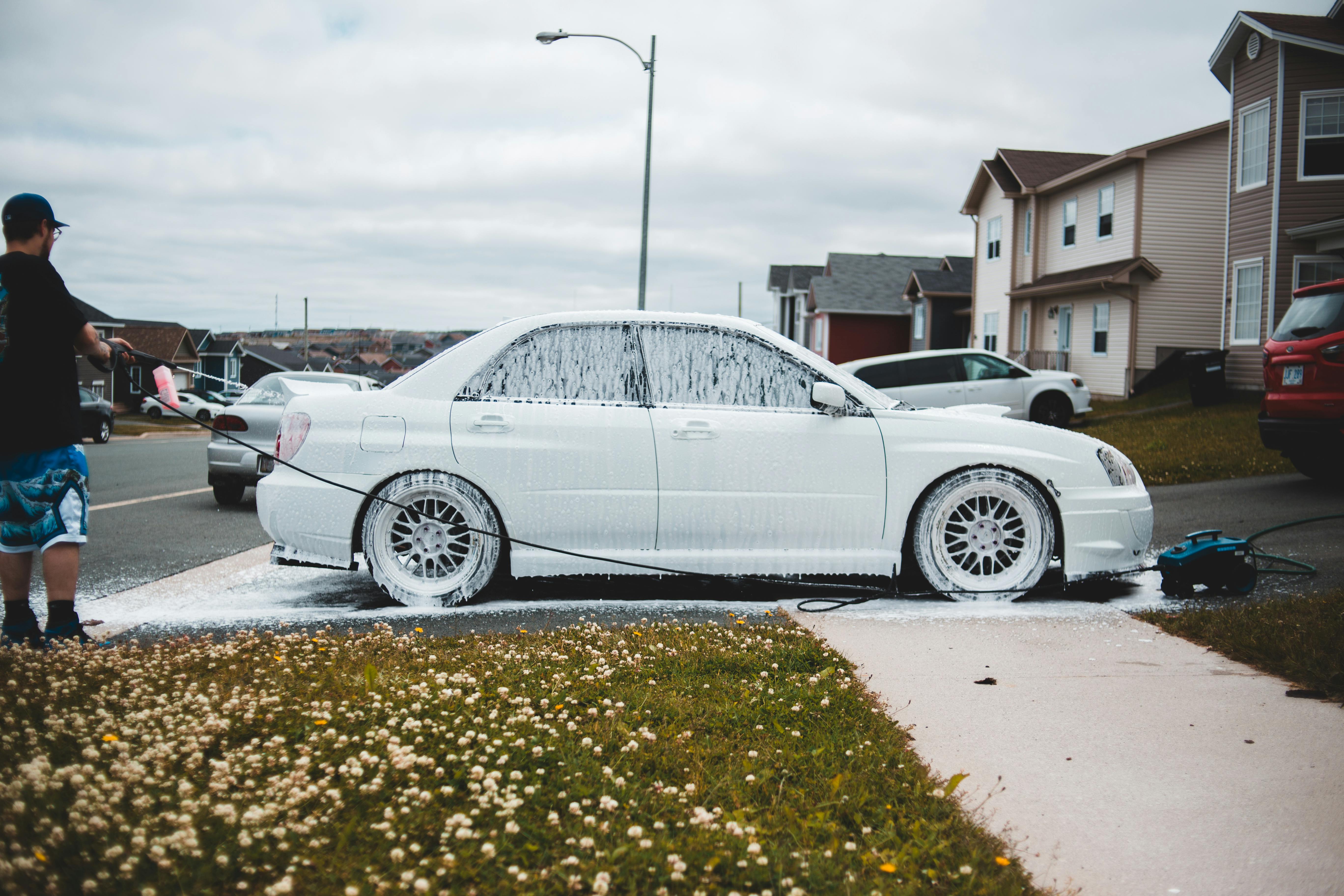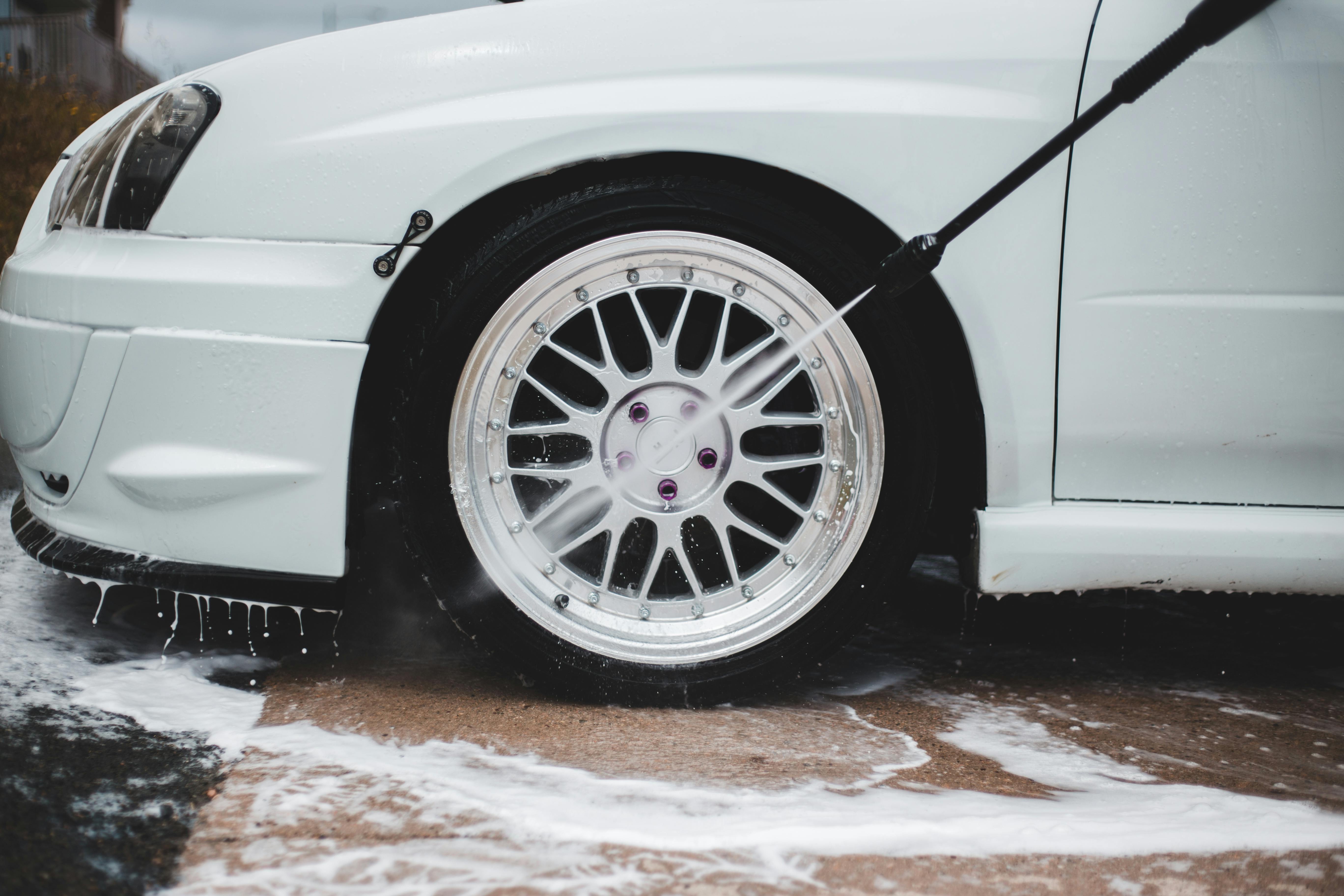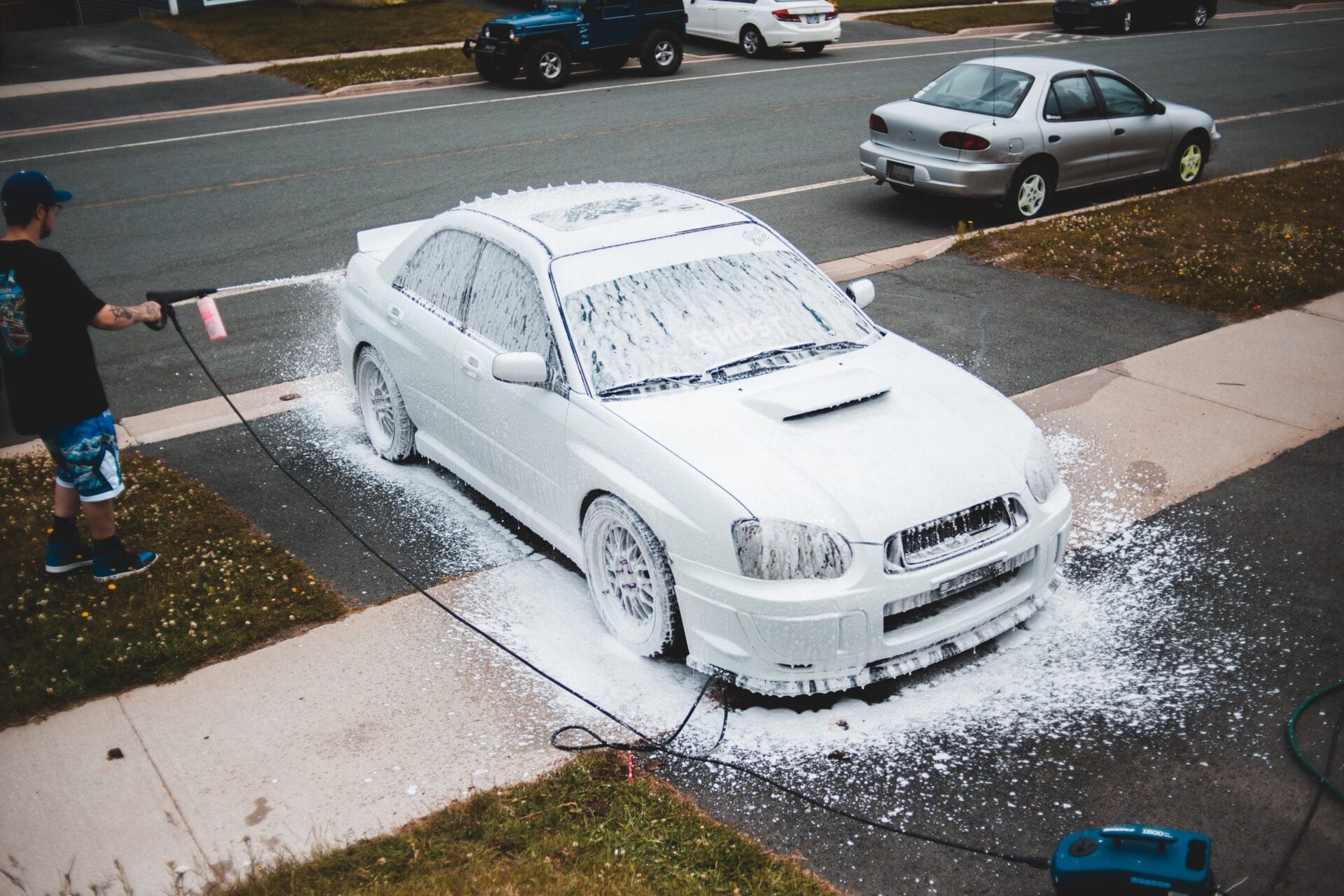Using pressure washing to clean outdoor surfaces is a great way to improve the aesthetic of your property. However, the water used in this process can be wasted if not collected and reused. Fortunately, reclaiming water from pressure washing is a simple process that can help you reduce your environmental footprint and save money on water bills. In this article, we will discuss how you can reclaim water from pressure washing and how you can use it for other cleaning tasks.Pressure washing is a method of cleaning surfaces using high-pressure water spray. It is an effective way to remove dirt, grime, loose paint, mold and other debris from hard surfaces such as concrete and brick. Pressure washing can also be used to clean decks, patios, driveways and other outdoor surfaces.
Reclaiming Water From Pressure Washing
Reclaiming water from pressure washing is a great way to reduce water consumption and help protect the environment. By reclaiming water, you are able to use the same water multiple times, which can help conserve natural resources. Additionally, reclaiming water from pressure washing can save you money by reducing the amount of fresh water you need to buy. It also helps reduce your ecological footprint as you are using less energy in transporting and treating new sources of water.
Reclaimed water can be reused for a variety of purposes in both residential and commercial settings. Reclaimed water from pressure washing can be used for irrigation systems, vehicle cleaning, dust suppression, and other outdoor applications. This reclaimed water is usually free of contaminants and safe for use in these applications. To reclaim water from pressure washing, all you need is a simple filter system that separates out dirt particles and other debris so that it can be reused again.
Another benefit of reclaiming water from pressure washing is that it helps prevent pollution caused by runoff into nearby bodies of water such as lakes, rivers, and oceans. When runoff containing chemicals or other contaminants enters these bodies of water it can have devastating effects on fish populations and aquatic ecosystems. Reclaiming this runoff before it reaches waterways helps to protect these important habitats from potential harm.
Overall, reclaiming water from pressure washing provides numerous benefits both economically and environmentally. By reusing the same source of clean and filtered water multiple times instead of relying on fresh sources every time, you can save money while helping to conserve valuable resources and prevent pollution-caused harm to nearby habitats.
Creating the Reclaimed Water System
Creating a reclaimed water system for pressure washing requires some planning and work. The first step is to determine the specific needs of your system. This includes the size and type of water tanks needed, the type of filtration materials required, and the pump that will be used to move the water. Once these items have been determined, you can begin to assemble your system. Begin by setting up a pressure washer tank with a drain fitting at the bottom, as well as any additional filtration materials that may be needed. Then connect this tank to a pump using piping or hoses that are designed for pressurized water systems. Finally, connect all necessary outlets such as a garden hose or nozzle and turn on the pump to ensure it is working properly.
Filling Your Reclaimed Water System
Once your reclaimed water system is set up, it will need to be filled with fresh water before it can be used. You can use either tap water or filtered water from a separate tank if you prefer. Once filled with fresh water, you will need to add any additional chemicals or treatments that are necessary for your particular application. This could include chlorine or other disinfectants, depending on what you are using the reclaimed water for.
Using Your Reclaimed Water System
Now that your reclaimed water system is set up and filled with fresh water, it is ready to be used for pressure washing activities. Make sure that you have all necessary safety precautions in place before beginning any work. These include wearing protective clothing and goggles when handling pressurized equipment and avoiding contact with any chemicals present in the reclaimed water system.
Finally, always make sure that your reclaimed water system is properly maintained between uses so that there are no contaminants present in the stored water when it is needed again. This includes regularly flushing out tanks, changing filters as necessary, and monitoring pH levels of stored liquids.
Reclaiming Water from Pressure Washing
Pressure washing is the use of high-pressure water spray to remove dirt, grime, and other materials from surfaces and objects. It is a fast and efficient way to clean large areas quickly. In many cases, the water used can be reclaimed for reuse or to be recycled. The equipment needed for reclaiming water from pressure washing includes a filtration system, a storage tank, and a pump.
Filtration System
The filtration system is the first step in reclaiming water from pressure washing. It removes dirt, debris, oils, and other contaminants that could damage or clog up pipes or other equipment in the system. The filter should be sized appropriately for the flow rate of the pressure washer and should be able to handle any solids that might be washed off with the water.
Storage Tank
A storage tank is used to hold the reclaimed water until it is needed again. The size of the tank will depend on how much water needs to be stored and how often it will need to be replenished. The tank should also have an overflow drain in case too much water enters it at once.
Pump
The pump is what pushes the reclaimed water back into the pressure washer for reuse. It must have enough power to move the amount of water being reclaimed at any given time as well as enough capacity to handle surges in demand when more than one person is using the pressure washer at once. A pump with too little power may not be able to move all of the reclaimable water back into the pressure washer at once, leading to waste.
In addition to these pieces of equipment, there may also be a need for additional valves, fittings, hoses, and other components depending on specific requirements of each situation. With all of this in place it is possible to reclaim up to 80% or more of all wastewater produced by pressure washing operations when used correctly and maintained properly over time.
Step 1: Prepare the System
Before you begin reclaiming water from pressure washing, you need to prepare your system. This includes gathering all the necessary equipment, including a water reclamation unit, a filter system, and a drain sump. You should also make sure that all the pipes and hoses are properly connected and secure.
Step 2: Connect the Hoses
Once your system is set up, you can begin connecting the hoses. The first hose should be connected from the pressure washer to the water reclamation unit. You should then connect a hose from the water reclamation unit to the filter system. The last hose should be connected from the filter system to the drain sump.
Step 3: Turn On Equipment
Once all of your hoses are properly connected and secured, you can turn on all of your equipment. Make sure that everything is running correctly before proceeding.
Step 4: Begin Reclaiming Water
Now that your system is set up and running correctly, you can begin reclaiming water from pressure washing. Start by running your pressure washer as normal and collecting any excess water in the reclamation unit. As this happens, dirty or contaminated water will be filtered out by the filter system and sent to drain sump for disposal or further processing as needed.
Step 5: Monitor Equipment
Once you have started reclaiming water from pressure washing, it is important to monitor all of your equipment closely to ensure that everything is running smoothly. Check for any leaks or clogs in the hoses or other components of your system and make sure that no contaminants are entering into your reclaimed water supply.
Step 6: Shut Down System
Once you are finished reclaiming water from pressure washing, it is important to shut down your system properly. Turn off all of your equipment in order and disconnect any hoses or other components when appropriate. This will help ensure that no contaminants enter into the reclaimed water supply when not in use.

Cleaning Equipment
Regular cleaning of pressure washer equipment is essential to ensure the proper functioning of the system. This includes cleaning all parts of the pressure washer, such as the pump, hoses, nozzles and filters. The easiest way to clean these components is to use a mild detergent and water. Once the components are cleaned, rinse them thoroughly with clean water and allow them to dry completely before reassembling them. It is important to regularly inspect the components for signs of wear and tear. If any components are damaged or worn out, they should be replaced immediately.
Maintaining Equipment
Regular maintenance of pressure washer equipment is also important for proper functioning. This includes checking for any leaks in the hoses or fittings, replacing worn out parts such as nozzles or filters, and checking the overall condition of the equipment. It is also important to regularly inspect all internal parts for signs of corrosion or damage caused by chemicals used in reclaiming water from pressure washing. In addition, it is important to make sure that all components are securely fastened in place and that they are not leaking.
Checking Pressure Washer Performance
It is important to check the performance of a pressure washer regularly in order to ensure that it is working properly. This includes checking for proper operation of all its components, ensuring that there are no leaks in the system, and ensuring that it is producing enough power for its intended purpose. If there are any problems with performance, then they should be addressed immediately so that they do not become more serious over time.
Storing Pressure Washer Equipment
When storing pressure washer equipment, it is important to ensure that it is stored in a cool dry place away from direct sunlight. This will help prevent corrosion and damage from occurring due to heat or moisture. It is also important to make sure that all components are stored securely so that they do not become damaged during storage or transportation.
Storing Reclaimed Water From Pressure Washing
Reclaimed water from pressure washing needs to be properly stored in a secure, covered container that is clearly labeled as “reclaimed water.” This helps to ensure that it is not used for drinking or other purposes for which it is not suitable. The container should be stored in a cool, dry area away from direct sunlight and any other sources of contamination. If the reclaimed water contains hazardous materials, such as petroleum-based chemicals, it must be stored separately from other materials.
Disposing of Reclaimed Water From Pressure Washing
Reclaimed water from pressure washing should never be disposed of directly into drainage systems or bodies of water. It is important to check with local authorities about the proper disposal methods for the particular type of reclaimed water. In some cases, the reclaimed water may need to be treated and filtered before it can be disposed of safely. Alternatively, the reclaimed water may need to be collected and taken to a designated disposal site for proper disposal.
Safely Using Reclaimed Water From Pressure Washing
Reclaimed water from pressure washing can be a great way to conserve water, reduce costs, and protect the environment. However, it is important to use the water safely to prevent contamination of drinking water supplies and other potential health risks. Here are some considerations to keep in mind when using reclaimed water for pressure washing:
- Make sure that the reclaimed water is collected in a container that is clearly labeled as “reclaimed” or “non-potable.” This will help ensure that the water is not mistaken for drinking water.
- Inspect the area where the reclaimed water will be used. Make sure that it is free of any visible pollutants and debris. Also, ensure that there are no known sources of contamination nearby.
- Do not use reclaimed water for cleaning surfaces that come into direct contact with food or food products. This includes kitchen counters, food preparation surfaces, utensils, and dishes.
- If you plan on disposing of the reclaimed water in a public sewer system or body of surface water, make sure to check with local authorities first to make sure it is allowed.
- Keep a record of when you use reclaimed water and where it was used. This will help you track any potential contamination problems should they arise.
By following these guidelines and exercising caution when using reclaimed water from pressure washing, you can help ensure that your operation runs safely and efficiently.

Conclusion
Reclaiming water from pressure washing is an efficient and cost-effective way to conserve water and reduce waste. It can save you money, reduce your environmental impact, and help keep your area clean. With proper installation and maintenance, reclaim systems can be a great addition to any pressure washing setup.
The process of reclaiming water involves filtering out particulates and debris from the water before it is recycled back into the system. This can be done using either a mechanical or chemical filtration system. Additionally, it is important to maintain your reclaim equipment in order to ensure that it continues to work properly.
Finally, it is important to follow best practices when pressure washing in order to minimize the amount of wastewater produced in the first place. This includes using low-pressure nozzles, avoiding the use of detergents, and taking steps to contain runoff. By taking these steps, you can further reduce your environmental impact while still getting the job done efficiently and effectively.
In conclusion, reclaiming water from pressure washing is an excellent way to conserve resources while keeping your area clean. With proper installation and maintenance of the reclaim system as well as following best practices when pressure washing, you can have a positive impact on the environment while also saving money on water bills in the long run.

